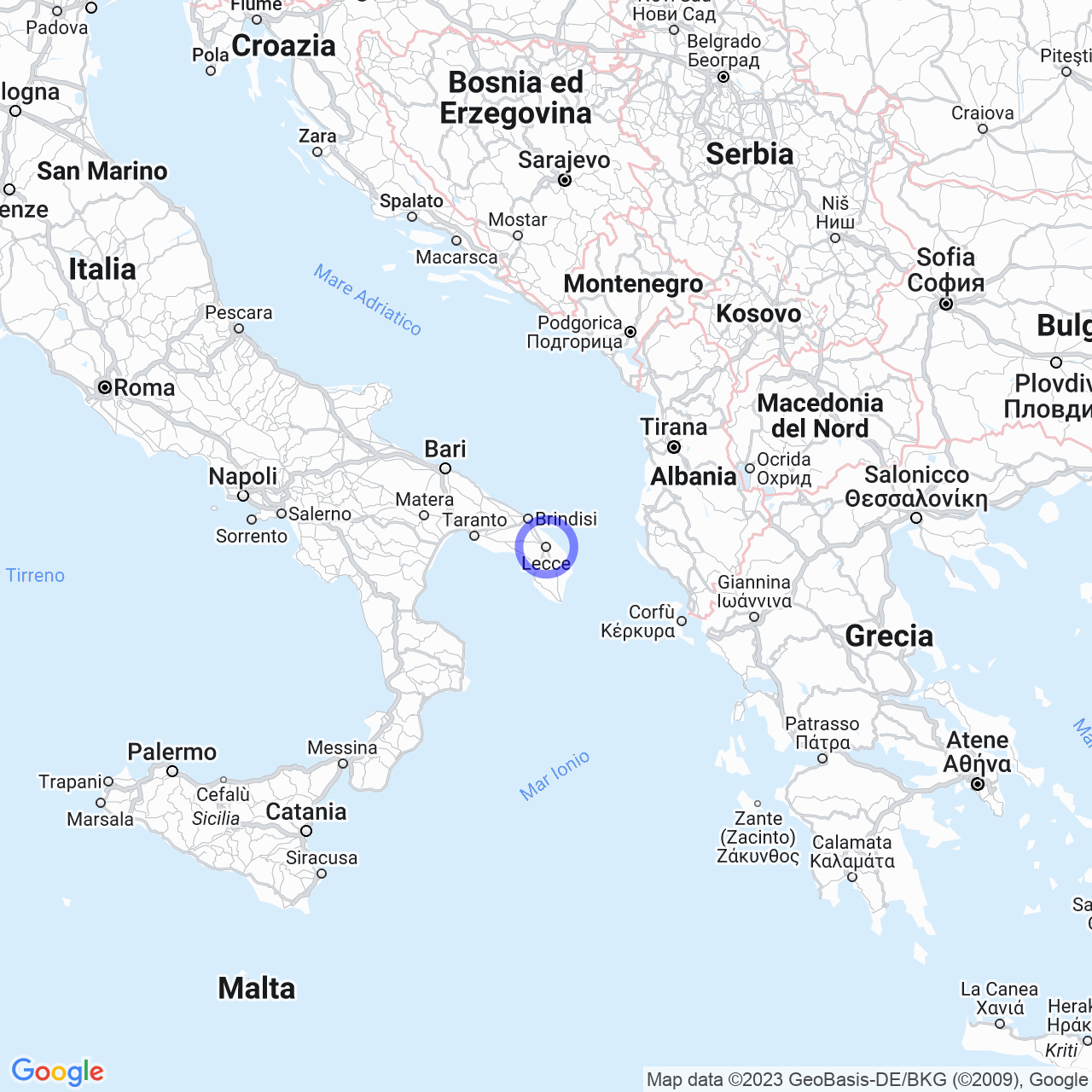Lecce
Lecce: the Lady of Baroque
Lecce, the capital of the province of Lecce, with its 94,491 inhabitants, is located in a central position in Salento, between the Adriatic and Ionian Seas, and is the easternmost provincial capital of Italy. Thanks to its ancient Messapian origins and the archaeological remains of Roman domination, Lecce is among the main art cities of Italy, so much so that it is called the "Lady of Baroque". But what distinguishes the beauty of Lecce?
The Baroque of Lecce
Lecce is distinguished by the richness and exuberance of typically seventeenth-century Baroque, which characterizes the churches and palaces of the city center, built in local Lecce stone, a limestone very suitable for processing with a chisel. The architectural development and decorative enrichment of the facades were particularly cared for during the Kingdom of Naples and characterizes the city in such an original way as to give rise to the definition of "Lecce Baroque."

Physical geography
Territory
The city of Lecce occupies the central-northern part of the Salento plain and is located in the plateau of Lecce, a vast and uniform lowland of Salento included between the terraced altitudes of the Murge and the Salentine mountains. The geomorphology of the territory is generally plain and characterized by a particular Miocene limestone-marly soil known as "Lecce stone."
The municipal territory of Lecce extends for 241.00 km² and includes the marinas of San Cataldo, Frigole, Torre Chianca, Spiaggiabella, and Torre Rinalda, the hamlet of Villa Convento, partially administered by the municipality of Novoli, and the suburb of San Ligorio. In addition, the enclave of the municipality of Surbo is enclosed in the municipal territory of Lecce.
Idume River
The Idume River is an underground river that crosses the territory of the municipality of Lecce and flows into the Adriatic Sea near the marina of Torre Chianca, creating the Idume basin. Instead, there are no surface watercourses, but the karst terrain has numerous sinkholes, called "vore" or "capoventi," which channel the water into the underground feeding the water table. To facilitate the flow of rain into sinkholes and avoid the formation of stagnant water, numerous channels have been dug into the territory.
University of Salento
The University of Salento is based in Lecce and represents the reference institution for training and research in Puglia thanks to its locations in Lecce, Brindisi, and Taranto.
Italian Capital of Culture
Lecce was the Italian Capital of Culture in 2015, an award that recognizes its cultural liveliness and artistic heritage. In fact, there are many cultural and leisure opportunities in the city, such as the Museum of the Treasure of the Cathedral, the Carlo V Castle, Piazza Sant'Oronzo, the Roman Theater, the Celestini Palace, and the Church of Santa Croce.
Lecce is a city that is absolutely worth visiting, not only for the beauty of its Baroque but also for the cultural offer and variety of activities it proposes.
